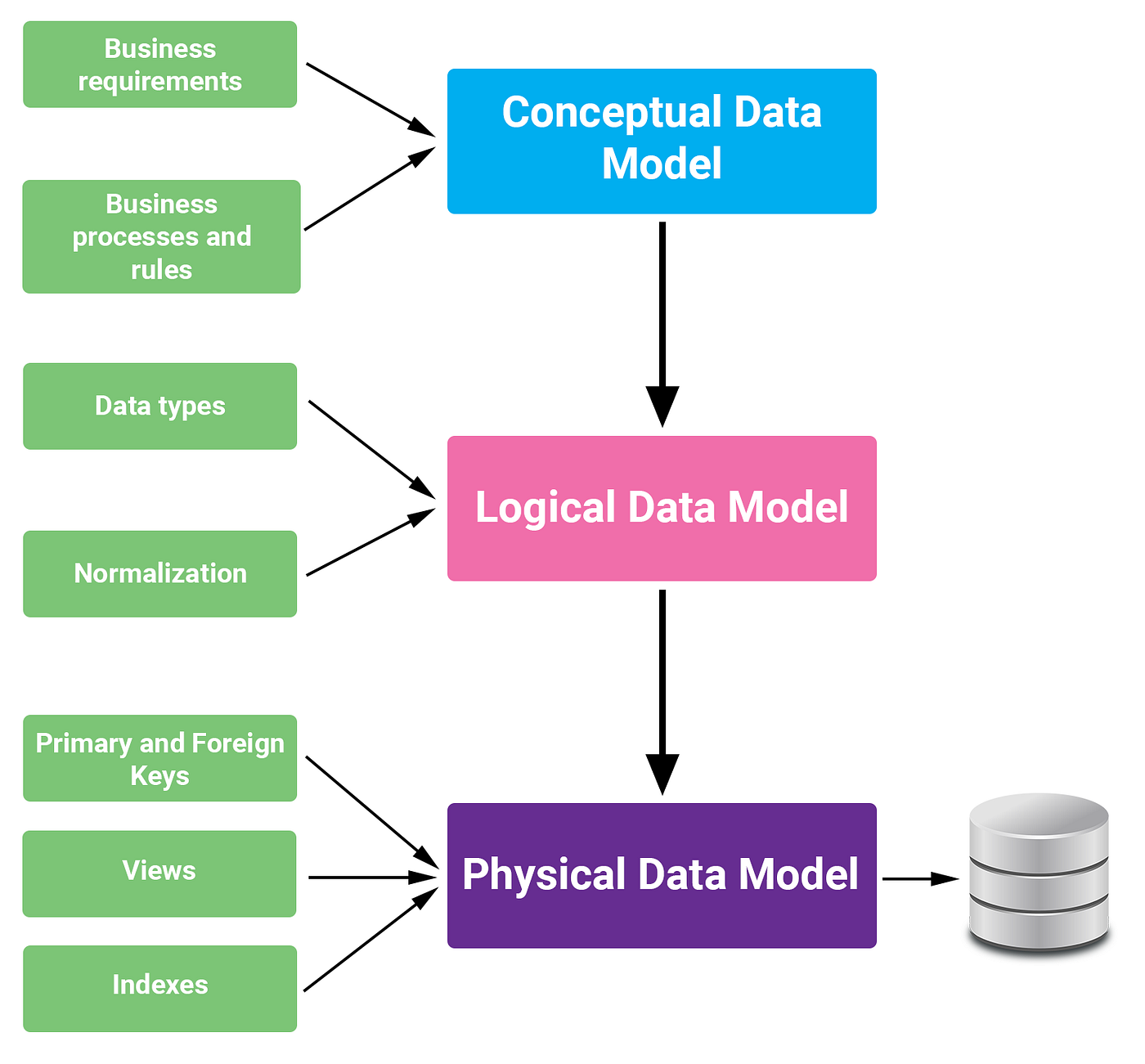In today’s data-driven world, businesses rely on accurate insights to make informed decisions. Data modeling plays a crucial role in driving Business Intelligence (BI) by structuring raw data into meaningful formats that enable analysis and reporting.
𝙒𝙝𝙖𝙩 𝙞𝙨 𝘿𝙖𝙩𝙖 𝙈𝙤𝙙𝙚𝙡𝙞𝙣𝙜?
Data modeling is the process of designing and organizing data structures to represent business processes and relationships. It defines how data is stored, connected, and accessed, ensuring consistency and accuracy.
- Common types of data models include:
𝘊𝘰𝘯𝘤𝘦𝘱𝘵𝘶𝘢𝘭 𝘮𝘰𝘥𝘦𝘭𝘴 – High-level business overview
𝘓𝘰𝘨𝘪𝘤𝘢𝘭 𝘮𝘰𝘥𝘦𝘭𝘴 – Detailed data relationships and attributes
𝘗𝘩𝘺𝘴𝘪𝘤𝘢𝘭 𝘮𝘰𝘥𝘦𝘭𝘴 – Actual database implementation - 𝙃𝙤𝙬 𝘿𝙖𝙩𝙖 𝙈𝙤𝙙𝙚𝙡𝙞𝙣𝙜 𝙀𝙣𝙝𝙖𝙣𝙘𝙚𝙨 𝘽𝙪𝙨𝙞𝙣𝙚𝙨𝙨 𝙄𝙣𝙩𝙚𝙡𝙡𝙞𝙜𝙚𝙣𝙘𝙚
- 𝘐𝘮𝘱𝘳𝘰𝘷𝘦𝘥 𝘋𝘢𝘵𝘢 𝘘𝘶𝘢𝘭𝘪𝘵𝘺 𝘢𝘯𝘥 𝘊𝘰𝘯𝘴𝘪𝘴𝘵𝘦𝘯𝘤𝘺
A well-designed data model ensures that data is accurate, standardized, and free from duplication, enhancing the quality of BI reports and dashboards. - 𝘍𝘢𝘴𝘵𝘦𝘳 𝘢𝘯𝘥 𝘔𝘰𝘳𝘦 𝘈𝘤𝘤𝘶𝘳𝘢𝘵𝘦 𝘙𝘦𝘱𝘰𝘳𝘵𝘪𝘯𝘨
Structured data models allow BI tools to process and retrieve data efficiently, enabling faster generation of insights and reducing reporting time. - 𝘉𝘦𝘵𝘵𝘦𝘳 𝘋𝘦𝘤𝘪𝘴𝘪𝘰𝘯-𝘔𝘢𝘬𝘪𝘯𝘨
Organized data makes it easier for businesses to identify trends, monitor performance, and predict future outcomes, leading to more strategic decisions. - 𝘋𝘢𝘵𝘢 𝘐𝘯𝘵𝘦𝘨𝘳𝘢𝘵𝘪𝘰𝘯
Data modeling helps unify data from multiple sources, providing a single source of truth for comprehensive analysis. - 𝘚𝘤𝘢𝘭𝘢𝘣𝘪𝘭𝘪𝘵𝘺 𝘢𝘯𝘥 𝘍𝘭𝘦𝘹𝘪𝘣𝘪𝘭𝘪𝘵𝘺
A strong data model allows businesses to adapt to changing needs and scale operations without compromising data integrity
𝙄𝙣 𝙨𝙪𝙢𝙢𝙖𝙧𝙮, data modeling transforms raw data into actionable insights, empowering businesses to make smarter decisions and gain a competitive edge.
Ready to start your next project? Let’s build something extraordinary together.
Visit: databaseschool.org
contact@databaseschool.org
+1 561-556-0226 , +880 175-244-9594

